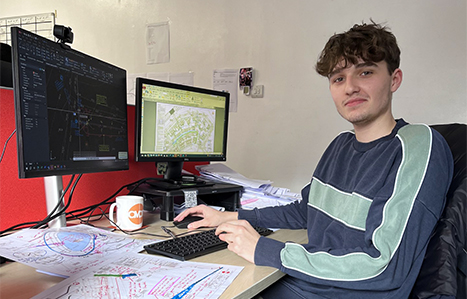Line of sight to work essential for vocational education and training
Vocational teaching and learning for adults should have a 'clear line of sight to work' if it is to help individuals, businesses and communities to grow and succeed.'That is one of the main findings of the newly-released report (Monday 25 March) by an independent commission of vocational education and training experts that included Richard Atkins, Exeter College's Principal.
The Commission on Adult Vocational Teaching and Learning (CAVTL), consisting of leaders and learners, and teachers and trainers, in vocational education and industry, was established in July 2012 and has been investigating how to further improve the quality and impact of vocational teaching and learning for adults in England, in order to support a return to economic prosperity. The 19 commissioners were chosen for their expertise and insight into the area of adult vocational teaching and learning.
“Having worked in further education for 30 years, my career in FE has involved me in the teaching and management of adult vocational learning, stretching across all subject sector areas, and from levels 1 to 5.” said Richard Atkins, “I am a passionate believer that FE is a first choice, second chance and last chance route for adult vocational learners, and as such, consistently transforms peoples' lives. Further education is a key feature of the UK’s social and economic infrastructure.”
“The role of Commissioner has given me the opportunity to contribute to a sector owned policy to support outstanding teaching and learning in FE, including making full use of the potential of technology.”
Richard Atkins joined his fellow 19 Commissioners on a number of visits to see vocational teaching and learning in situ and to draw lessons from practice to theory. Many contributions have also been received through a programme of nationwide seminars, commissioned research, and a rich and diverse evidence base, all of which have shaped the commissioners' conclusions.
The Commission has highlighted that the best adult vocational teaching and learning has four factors in common:
1. It is based on a clear line of sight to work – so that learners see and understand the relevance of what they are learning to the real work context;
2. It is based on the concept of the two-way street so that employers, colleges and training providers work closely together at every level of their organisations, helping to create and deliver excellent vocational programmes;
3. It is taught by dual professionals – people who combine expertise in their occupational area, with expertise as teachers and trainers;
4.It has access to industry-standard facilities and resources – that reflect the ways in which technology is transforming work.
Speaking at the launch of the report, chair of the Commission Frank McLoughlin CBE said: “This Commission has been informed by excellent examples of adult vocational teaching and learning across all parts of the economy. The best provision we have seen has been collaborative in nature, based on what we are calling the two-way street between providers and employers. It is the partners of the vocational education and training system, working in collaboration, who must now act to achieve the vision we are setting out.”
Welcoming the report, Skills Minister Matthew Hancock said: “We have some fantastic examples in this country of vocational education providers working closely with industry and preparing students with work-ready skills but we need to do more to spread best practice. “As the Commission rightly suggests, these excellent examples should be mirrored across the further education sector so each and every student is getting the experience needed to progress into work. This report sets out key challenges that, if tackled successfully, will have a significant and lasting positive impact on the quality of further education and skills.”
Fiona McMillan OBE said: “We have witnessed first-class vocational teaching and learning in a range of occupational sectors. The opportunities for progression to sophisticated higher level vocational learning have been particularly striking. We have seen how by deepening vocational knowledge and skill, occupational standards rise over time. It has been exciting to see how vocational education and training is helping to transform the quality and efficiency of work.”



